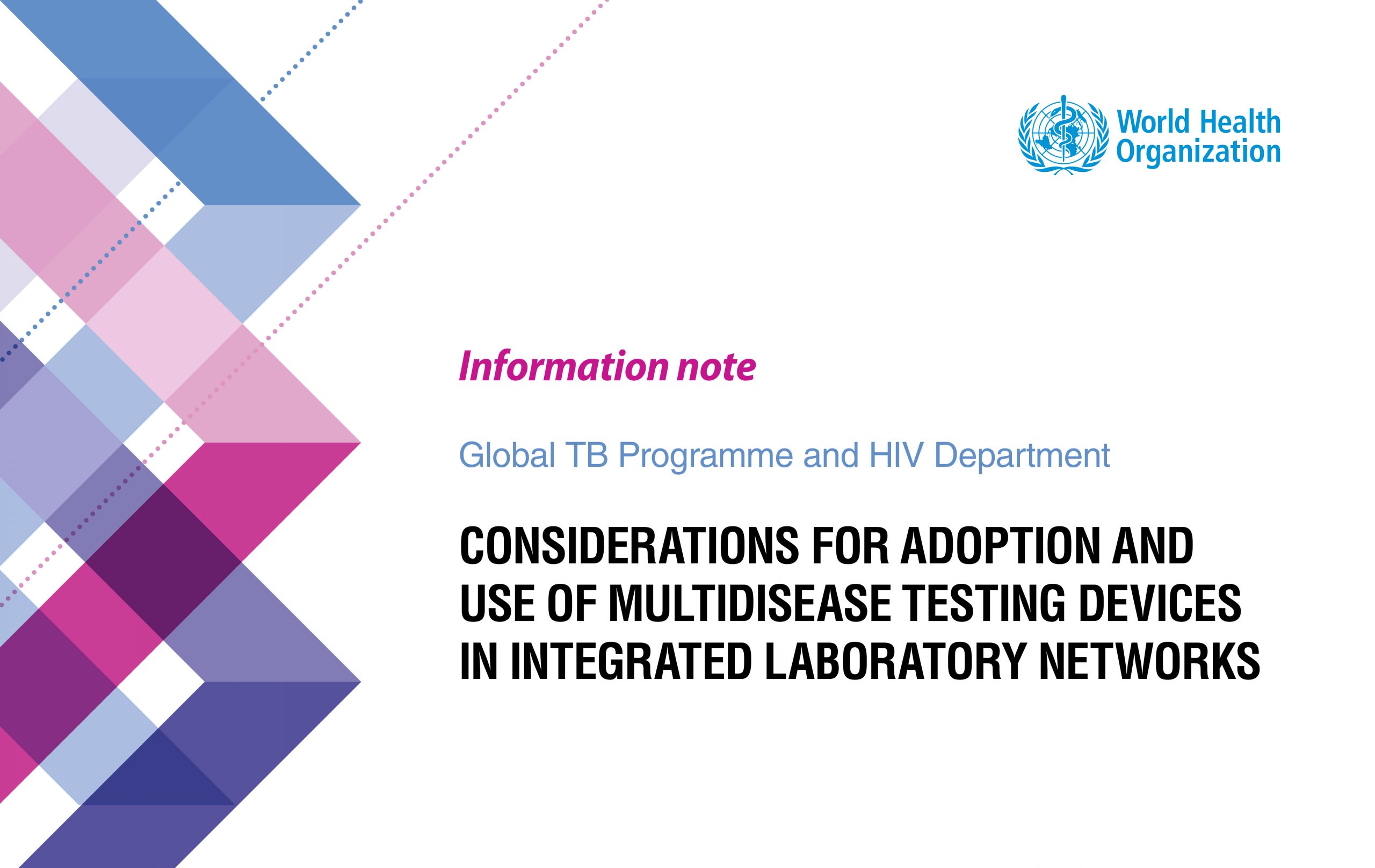Resource Centre
WHO Considerations for Adoption and Use of Multi-disease Testing Devices in Integrated Laboratory Networks
November 15, 2018

Several new laboratory technologies are available or are being developed to allow for testing of different conditions using disease-specific tests on the same platform. For example, a single device may be able to test for the presence of tuberculosis (TB) and HIV, and quantitatively measure HIV and hepatitis C viral load by using disease-specific reagents or cartridges with self-contained nucleic acid testing technology.
Some of these technologies are being designed for use at centralized reference laboratories while others may be positioned for use at or near to point of care. In settings where laboratory testing has been traditionally organized by disease programme, the introduction of multidisease testing devices (also known as polyvalent testing platforms or multianalyte analysers) brings new opportunities for collaboration and integration, which can provide significant system efficiencies and cost savings, increase patient access, and ultimately improve quality of care.
Collaboration and integration should be a priority for both those countries with currently operational multidisease testing devices and those countries considering and planning for their introduction. This information note provides a strategic overview of key implementation considerations for diagnostic integration using these devices, and is primarily intended for use by national laboratory services and TB, HIV, and hepatitis programme managers. It may also be of interest to managers of maternal, newborn and child health programmes and sexual and reproductive health programmes, international
and bilateral agencies, and organizations that provide financial and technical
support to the relevant national health programmes.

